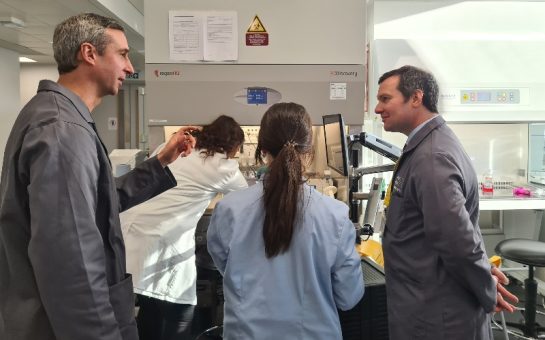This year’s spoof Nobel Prize winners put an alligator in a tank filled with helium and oxygen and make it bellow.
A group of international researchers found out what happens when you make an alligator breathe helium.
Their achievement was honoured with an Ig Nobel Prize – a spoof Nobel Prize dedicated to research that ‘makes you laugh and then think’, this year.
Stephen Reber, a researcher in cognitive zoology, and his colleagues placed a Chinese alligator into an airtight tank filled with a mixture of helium and oxygen (heliox) to observe any changes in the reptile’s vocalisations.
“We know that mammals and birds create sound with vocal tract resonances, but we wanted to know whether non-avian reptiles did the same,” said Reber.
Many animals vibrate air in their vocal tracts to create sound frequencies known as ‘formants’.
The pitches of their voices correlate with the animal’s size – just as a large drum can create a lower pitch because of its greater surface area, larger animals with longer vocal tracts can create deeper vibrations.
This comes in useful during mating seasons or when crocodilians (alligators and crocodiles) are fighting for territory.
Before the team’s research was published, there was no previous recorded evidence of formants in non-avian reptiles.
Reber and his team realised there was an opportunity to confirm a long-standing belief that crocodilians used formants like most other animals.
The team found a vocal female Chinese alligator which responded reliably to recordings of her own bellows.
They filled her tank with heliox and measured the frequencies of her sounds after she breathed in the gas.
“I think she quite enjoyed it. Heliox is easier to breathe than air so it must have been easier for her to make noises and she might have noticed how her voice changed,” Reber said, noting how the alligator was bellowing consistently, a sign that she was not distressed.
The analysis of the alligator’s bellows demonstrated that the higher frequencies were shifted due to the heliox, confirming that Chinese alligators likely also use formants to communicate their size to each other.
The presence of formants in animals can help predict how many traits in different species have evolved over time.
“What we notice is that all American alligators we recorded actively tried to sound lower,” said Reber.
This race to create the deep pitches is found in other animals. Over 60 bird species have over time, evolved longer tracheas to sound lower and give exaggerated impressions of their sizes.
This discovery also has potential to shed light on how dinosaurs, the close ancestors of birds and crocodilians, communicated as well.
Reber and his team were delighted to be the winners of the 2020 Acoustics Ig Nobel Prize.
Manchester’s very own Andre Geim, the discoverer of graphene, won the 2000 Ig Nobel Prize in Physics for making a frog levitate using magnets. To this day, Geim is the only one to have won both the prestigious Nobel Prize and its spoof equivalent, showing that great science need not be so serious.
PIC COURTESY OF: RedGazelle123 @ Wikimedia Commons



